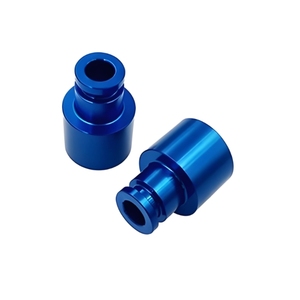(31036 products available)

































































































































































































A titanium etching machine is used to engrave or mark factory logos, barcodes, patterns, designs, and texts on titanium products. There are several types of titanium etching machines:
Material:
The machines are made up of titanium alloy or titanium material.
Depth:
This is the quantity of titanium metal that is eroded away in the engraving. The depth of the titanium etching can range anywhere between light to deep depending on the design or pattern.
Resolution:
The resolution of the etching refers to the clarity and sharpness of the design. This can range between low, medium, high, very high, or ultra-high depending on the machine and specifications.
Power:
The laser etching machine works at a certain wattage and laser power. The power ranges from 20w to 150w. The higher the power the faster the engraving.
Cooling system:
The laser machine is equipped with a cooling system to release heat and keep the machine cool during the etching process. This also helps to maintain performance and prevent damage.
Control system:
The etching machine's control system is the computer-aided design (CAD) software used to control the depth of the etching/treatment and design. This can include software for pre-engraving image editing and laser control.
Speed
The speed of the etching process is how fast the laser beam moves across the titanium surface. The speed can range from slow to fast and will affect the depth of the titanium that is etched.
Optics and Lens:
The etching beam is focused onto the titanium surface with the help of optics and lenses. This affects the resolution, depth, and speed of the etching.
Regular maintenance of the titanium etching machine is imperative for optimal performance and long life. Some procedure tips are as follows:
The titanium etching machines are very helpful and are widely used in various industries and fields. Here are some of the most common uses of these amazing machines:
The following tips and suggestions can help buyers when choosing a titanium etching machine.
Intended application
Buyers must consider the material and depth they plan to work on. For instance, if one plans to work on delicate materials or requires intricate designs, chemical etching may be the better option. On the other hand, laser etching is more suited for achieving high-precision details.
Machine compatibility
It's crucial to check whether the etching machine integrates smoothly into existing production lines or systems. Assess and confirm the compatibility of etching machines with manufacturing or design setups. For example, certain laser etching machines may need additional software for design uploads or specific lasers for certain materials.
Quality of etching machines
Buy qualitative etching machines. Focus on the build quality, which will impact the results and durability of the machine. Supreme etching machines produce sharper images and are more durable than inferior machines.
Ease of use
Investigate the etching machine's operating system and software. Determine how user-friendly the interface is and if it requires special training to operate the machine properly. Selecting a simple-to-operate etching machine can help cut down on training time and boost productivity.
Maintenance requirements
Understand the maintenance needs of the machine, like cleaning and calibration. Find out if the machine requires periodic servicing or if specialist support is required. Determine if spare parts are readily available.
Q1: Can the titanium etching machine handle all types of titanium?
A1: Not all titanium alloys are suitable for chemical machining. As previously mentioned, the titanium etching machine is incompatible with titanium alloys with high oxygen content. Nevertheless, the titanium etching machine can process commercially pure titanium and some titanium alloys.
Q2: What are the restrictions when using the titanium etching machine?
A2: The titanium etching machine cannot be cut in very small areas. Gaining a better shape by removing more material is preferable. Moreover, it is unwise to attempt to create a gap or a contour in the same space. Follow the manufacturer’s instructions for the best results.
Q3: What is the titanium etching process?
A3: The titanium etching process involves applying a design to the metal surface, which is then immersed in an acid bath to remove the top layer. When the bath is complete, the design will be left on the titanium.
Q4: What kind of paint works on titanium?
A4: Any titanium surface can be coated with paint after undergoing the titanium etching process. It is possible to etch paint on titanium in various ways, such as using spray paint. However, it is recommended to use a primer to create a solid bond between the titanium and the paint.